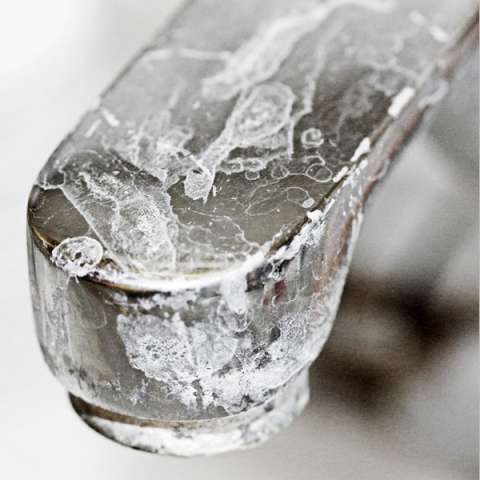Softening Hard Water: Why It Still Matters and How Mapril Can Help
Water is a must-have in no less than the daily life of a person, and the same goes for the industry. On the other hand, it is not the case that each water type is of the same quality. Water that is hard and full of minerals that are inter alia calcium and magnesium causes such problems that not only the equipment but the whole processes and costs are affected. We at Mapril are dealing with industrial chemical solutions and water treatment technologies and we are totally aware of the importance of water quality all over the world. The below mentions hard water, the difficulties it presents, how it gets softened, and how Mapril solves can help.
What is Hard Water?
Hard water is characterized by high concentrations of mineral ions, with the major contributors being calcium (Ca²⁺) and magnesium (Mg²⁺). The minerals needed for such water come from dissolving of limestone, chalk, dolomite and other similar types of rock formations in water.
There are two
– Temporary hardness: from minerals of bicarbonate, which can be removed by boiling or adding lime.
– Permanent hardness: from minerals of non-carbonate (e.g., sulphates, chlorides), that are more difficult to separate.
Why Hard Water is a Problem
Both industrial and domestic systems are equally affected by hard water in various ways:
1. Scale buildup: Calcium carbonate deposits form in pipes, boilers, heat exchangers, etc. and as a result, energy efficiency is lowered and the maintenance cost is increased.
- Reduced efficiency: Due to the heating of water, when for example, a water heater needs more energy to heat water if scale is acting as an insulating layer.
- Chemical usage: The reason why more detergent or cleaning chemicals are used is that hard water reacts with soap and an insoluble compound (soap scum) is formed thereby the cleaning power is reduced.
- Equipment wear & downtime: Parts such as pumps, valves, and sensors etc., may be broken or demand more frequent servicing.
- Product quality issues: In the situation of (food, pharmaceuticals, chemical production) the water that is hard can cause process changes, dirty products, or just change the product quality
- Corrosion & appearance: Stained surfaces, deposits on appliances, scaling of small vents may result from your water.
Methods of Softening Hard Water
——————————-
Main methods are:
– Ion Exchange: Water flows through a resin bed loaded with sodium (or potassium) ions. The exchange of Ca²⁺ and Mg²⁺ for Na⁺ takes place thus the removal of hardness is achieved. After that the resin is regenerated with a salt brine. Very efficient, it is a standard method in industrial systems. However, it requires space, and periodic regeneration as well as salt/brine waste handling.
– Reverse Osmosis (RO) / Nanofiltration: Membranes are responsible for the removal of mineral ions in water by the use of membrane technology. RO is complete and nanofiltration less so but more efficient in certain temperature / flow regimes. RO is energy-intense; membranes need to be maintained. It is suitable for point-of-use or areas where extremely high purity is demanded.
– Salt-free or Conditioners (e.g., Template-Assisted Crystallization, TAC): The minerals do not get removed, however, they switch to another form which does not precipitate or stick to surfaces (scale control). They are cheaper, less trouble with the maintenance, nevertheless, they are not so “complete” a solution; adequate enough mainly in moderate hardness or specific applications.
– Lime Softening: Impurities in water as carbonate minerals precipitate and can be removed upon the addition of lime (calcium hydroxide). The pH is elevated and it is sometimes used in municipal / industrial scale treatments. Strict pH control is required and it causes sludge.
– Boiling / Thermal methods: By boiling the bicarbonates of temporary hardness precipitate out making it a method to be used only in small quantities or in a laboratory setting.
– Chelating / Sequestration Chemicals: The chemicals either directly attach the calcium/magnesium ions or they alter the chemical state of the ions to a form where the ions will not form scale. Such chemicals are often combined with other methods for water treatment. The expense of the consumables may elevate the overall cost of water treatment.
Selecting the Right Solution:
Key Factors
—————————————-
– Degree of hardness: How much Ca²⁺/Mg²⁺ are present (mg/L or ppm hardness).
– Volume / flow rate: How much water per hour/day must be treated.
– Water usage pattern: Continuous flow vs batch / intermittent usage.
– Space availability: Some softening equipment require significant space and installations.
– Waste / by-product handling: Regeneration brine, sludge, or membrane cleaning waste must be handled per regulations.
– Cost (CAPEX and OPEX): Upfront installation, operational chemistry, power, maintenance.
– Water quality requirements: Certain industrial or process water requires strict purity.
How Mapril Helps
—————-
At Mapril, we’ve been delivering advanced water treatment and chemical solutions since 1979. Here’s what makes us well placed to address hard water issues:
1. Expertise in Industrial Chemical Solutions: Mapril has deep know-how in designing, supplying, and optimising chemical treatments and integrating them with process systems.
2. Tailored Treatment Systems: We can recommend and supply ion-exchange units, membrane-based solutions, or hybrid systems depending on customer needs.
3. Service & Support: Regular maintenance (resin regeneration, membrane cleaning, chemical dosing) is essential. Mapril offers support, maintenance schedules, and monitoring.
4. Compliance & Sustainability: Mapril’s solutions minimise waste, optimise water and chemical usage, and ensure environmental compliance.
5. Cost Efficiency Over Time: Investment in proper water softening yields savings via lower energy costs, longer equipment life, reduced chemical usage, fewer breakdowns, and less downtime.

